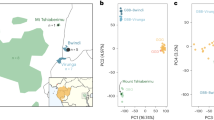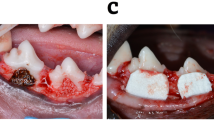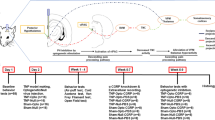Abstract
PROF. OSMAN HILL'S interesting account of the gland on the chest of a male drill1 reminds me that nearly twenty years ago2 I described and figured a somewhat similarly situated gland in two adult male gibbons from Borneo. In these apes, the glandular area superficially is an elongated triangular patch of thickened skin sparsely covered with short hairs, and in one of the specimens with blackish secretion. It is broad above and narrowed below, and extends from the region of the inner ends of the collar-bones down-wards and terminates in a point a little below the mammæ. Although I had one of these gibbons under observation in the Zoological Gardens at Regent's Park, London, neither I nor the keeper in charge ever saw the animal evince the least sign of being aware of the existence of the gland; but Prof. Hill's amusing description of the conduct of the drill in connexion with its pectoral gland shows that there is still a great deal of interesting information about the behaviour of wild animals to be learnt by observing them in captivity.
This is a preview of subscription content, access via your institution
Access options
Subscribe to this journal
Receive 51 print issues and online access
$199.00 per year
only $3.90 per issue
Buy this article
- Purchase on SpringerLink
- Instant access to full article PDF
Prices may be subject to local taxes which are calculated during checkout
Similar content being viewed by others
References
NATURE, 152, 199 (1944).
Proc. Zool. Soc., 1492 (1925).
Author information
Authors and Affiliations
Rights and permissions
About this article
Cite this article
POCOCK, R. Pectoral Gland in Apes and Monkeys. Nature 153, 381 (1944). https://doi.org/10.1038/153381b0
Issue date:
DOI: https://doi.org/10.1038/153381b0
This article is cited by
-
A sternal gland in the Siamang Gibbon(Hylobates syndactylus)
International Journal of Primatology (1987)



